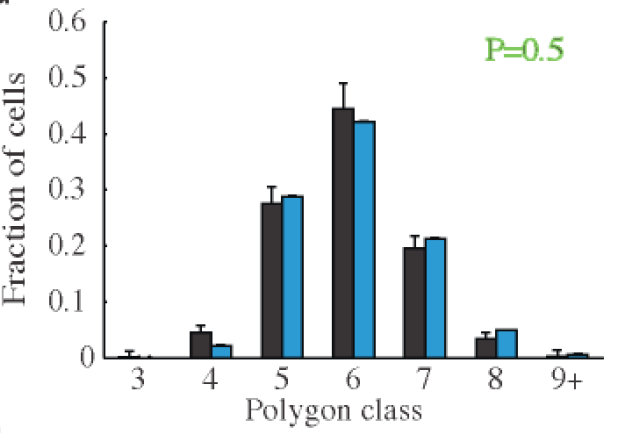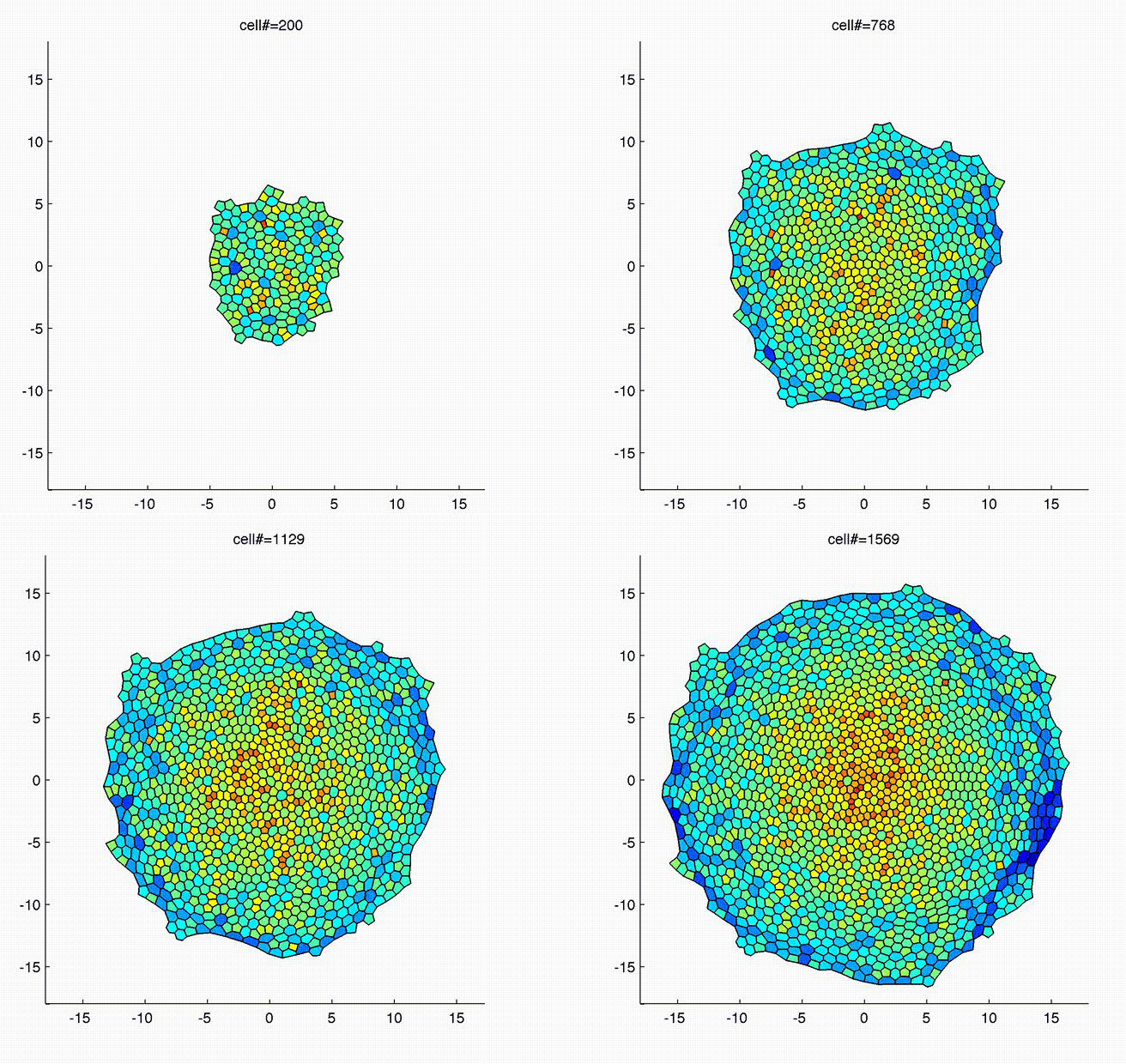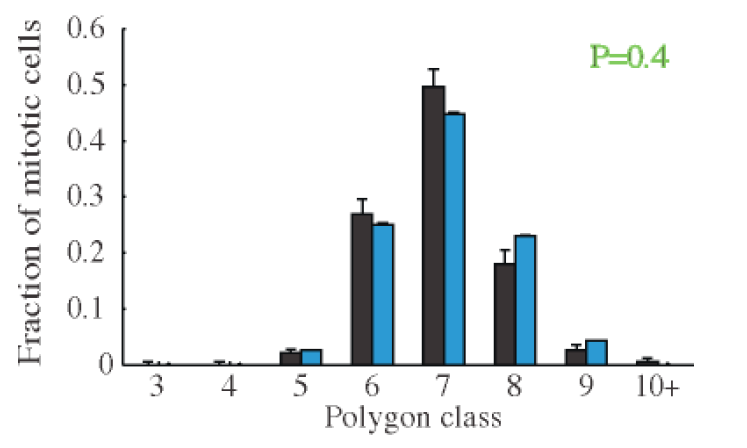Modelling the growth via mechanical feedback
The wing imaginal disc of Drosophila has been used as a model to study organ growth for decades. However, in spite of its simplicity, many factors are still unknown. For instance in spite of the fact that one of the main growth factors shows a clearly developed concentration gradient, growth occurs uniformly during most of the development of the wing disc. We have proposed the possibility of mechanical feedback arising from the stresses induced during growth as a regulator. Assuming that compression inhibits further growth while stretching above a certain threshold stimulates growth, we were able to show that uniform growth can be obtained even in the presence of a gradient of growth factor concentration. Moreover, as the tissue grows, stresses are built up, which oppose the growth factor and hence lead to a cessation of growth at a certain size. This is illustrated in the figure below, where the outcome of a simulation of a growing tissue is given with the different stress-induced/inhibited growths as well as the growth factor concentration.
Simulated growth of a Drosophila wing disc in a cell based model including the distribution and interaction of known morphogens. The model reproduces uniform growth as well as the increase of stresses during growth found experimentally (see mechanical forces section). Using the fact that the model is cell based and based on known morphogenetic interactions, several known genetic disturbances can be simulated as well. The interaction network of the model is shown in the figure below.

This project is carried out in collaboration with Tinri Aegerter-Wilmsen (Tinri dot Aegerter at imls dot uzh dot ch) from the Basler Lab at the University of Zurich. For more information, consult the 2007 Mech. Dev. paper as well as the 2012 Development paper in the publications section.
Mechanical effects on tissue topology
In the context of growth modelling of the Drosophila wing imaginal disc, we have studied the effects of a possible mechanical growth regulation by investigating the topology of the epithelial tissue. Assuming a growth controlling effect of mechanical forces as well as mechanical stability of the tissue, we have carried out simulations of the cellular structure of the tissue. An example of a simulation outcome is given below. This is statistically comparable to the tissue as found experimentally by imaging GFP labelled cadherin proteins (see imaging).
Simulation outcome of cellular topology when including a mechanical growth controlling effect.
This comparison can be made via a histogram of the cell number distributions, i.e. how many neighbours individual cells have. A statistical comparison is then done by calculating the chi-squared of the distributions yielding a confidence value. Such a comparison is shown below both for the cell of the tissue as well as the dividing cells. As can be seen, in both cases, the simulation agrees well with the experiments thus indicating the importance of mechanical effects in the tissue topology.

Comparison of simulated (blue) and experimental (black) distribution of cell numbers. The top figure show the case of all cells in the tissue, whereas the bottom figure shows the mitotic cells. In both cases, the simulation describes the data well.
This project is carried out in collaboration with Tinri Aegerter-Wilmsen (Tinri dot Aegerter at imls dot uzh dot ch) from the Basler Lab at the University of Zurich. For more information, consult the 2010 Development paper in the publications section.


